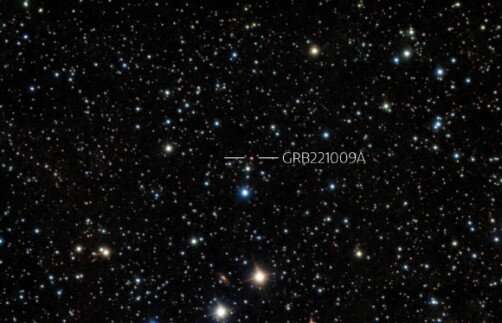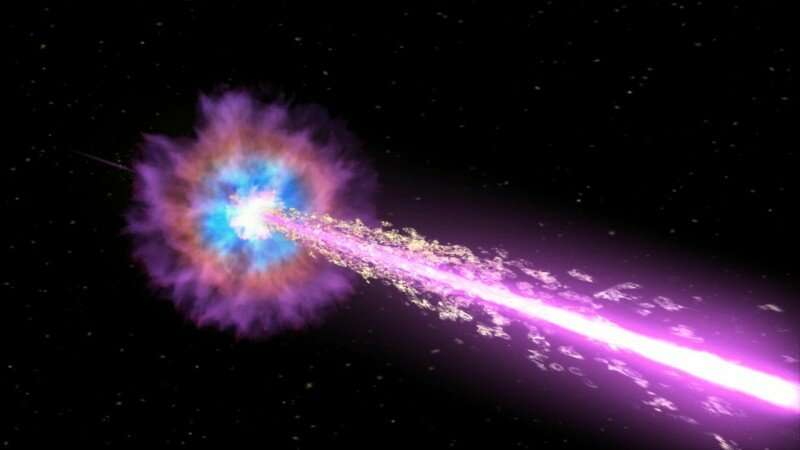The University of Alabama in Huntsville (UAH) has announced that three researchers associated with the UAH Center for Space Plasma and Aeronomic Research (CSPAR) have discovered a gamma-ray burst (GRB) approximately 2.4 billion light-years away in the constellation Sagitta that ranks as the brightest ever observed. Believed to have been triggered by collapse of a massive star, it is accompanied by a supernova explosion, giving birth to a black hole.
The University of Alabama in Huntsville (UAH) has announced that three researchers associated with the UAH Center for Space Plasma and Aeronomic Research (CSPAR) have discovered a gamma-ray burst (GRB) approximately 2.4 billion light-years away in the constellation Sagitta that ranks as the brightest ever observed. Believed to have been triggered by collapse of a massive star, it is accompanied by a supernova explosion, giving birth to a black hole.

Gamma-ray bursts come from random directions of the sky, so the GBM must watch as much of the sky as possible at all times. The GBM consists of 12 detectors made of sodium iodide for catching X-rays and low-energy gamma rays and two detectors made of bismuth germanate for high-energy gamma rays.
When the gamma rays enter these detectors, they interact with crystals in the instrument. The more energetic the gamma ray, the more light is produced. By seeing which crystals light up, the GBM can tell the direction of the bursts. In all, the Fermi instrument has discovered over 3,500 GRBs, and 221009A is by far the brightest ever detected.
“During a GRB, we see the death of a massive star, approximately 30 times more massive than the sun, and the formation of a black hole,” Dr. Veres explains.
“The black hole launches a very fast jet close to the speed of light, and the jet will produce the gamma-ray burst. At later times, GRBs are visible at other wavelengths as well, from radio, or optical through very high-energy gamma-rays, which is called the afterglow of the GRB. This GRB was so bright, the afterglow showed up in the Gamma-ray Burst Monitor, which is very uncommon, and we could follow it for almost three hours.”
GRB 221009A is also one of the nearest and possibly most energetic GRBs ever found, as detailed in a paper on the arXiv preprint server, which has been accepted for publication in The Astrophysical Journal Letters.



